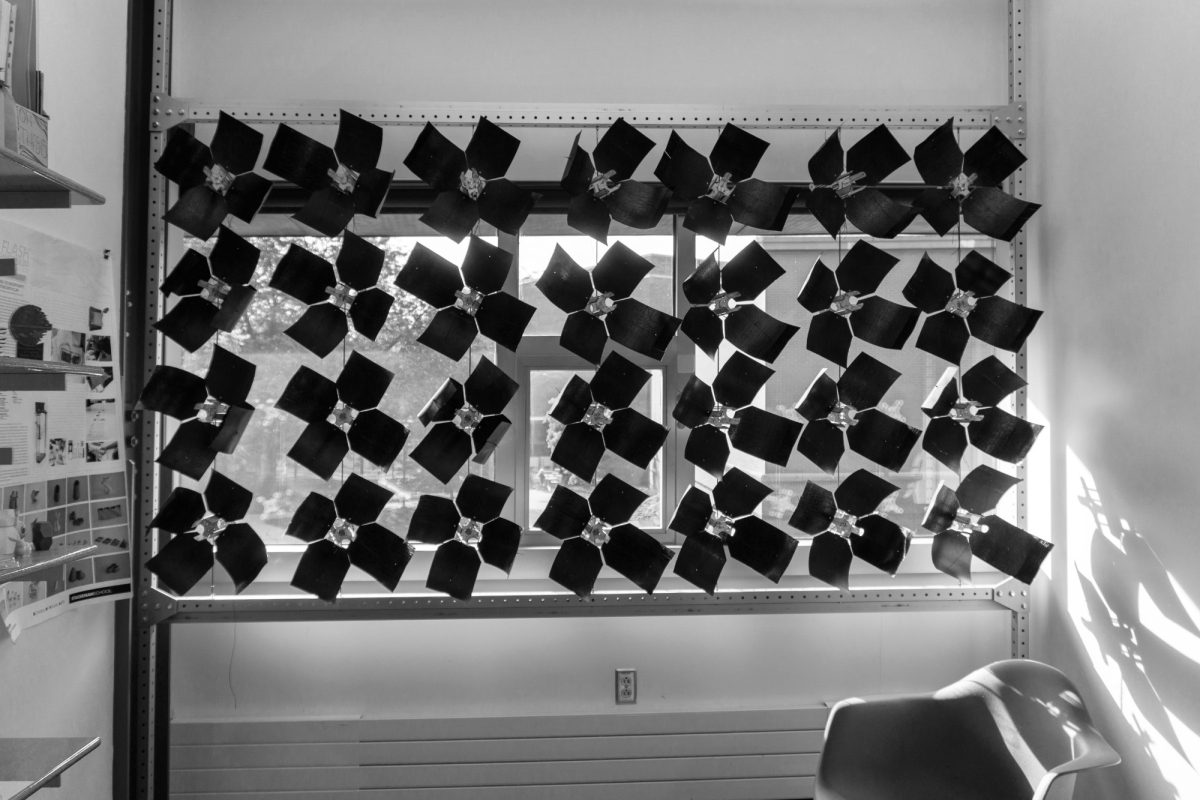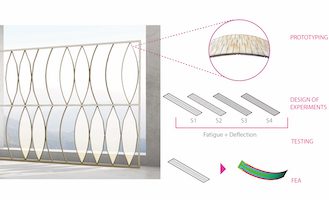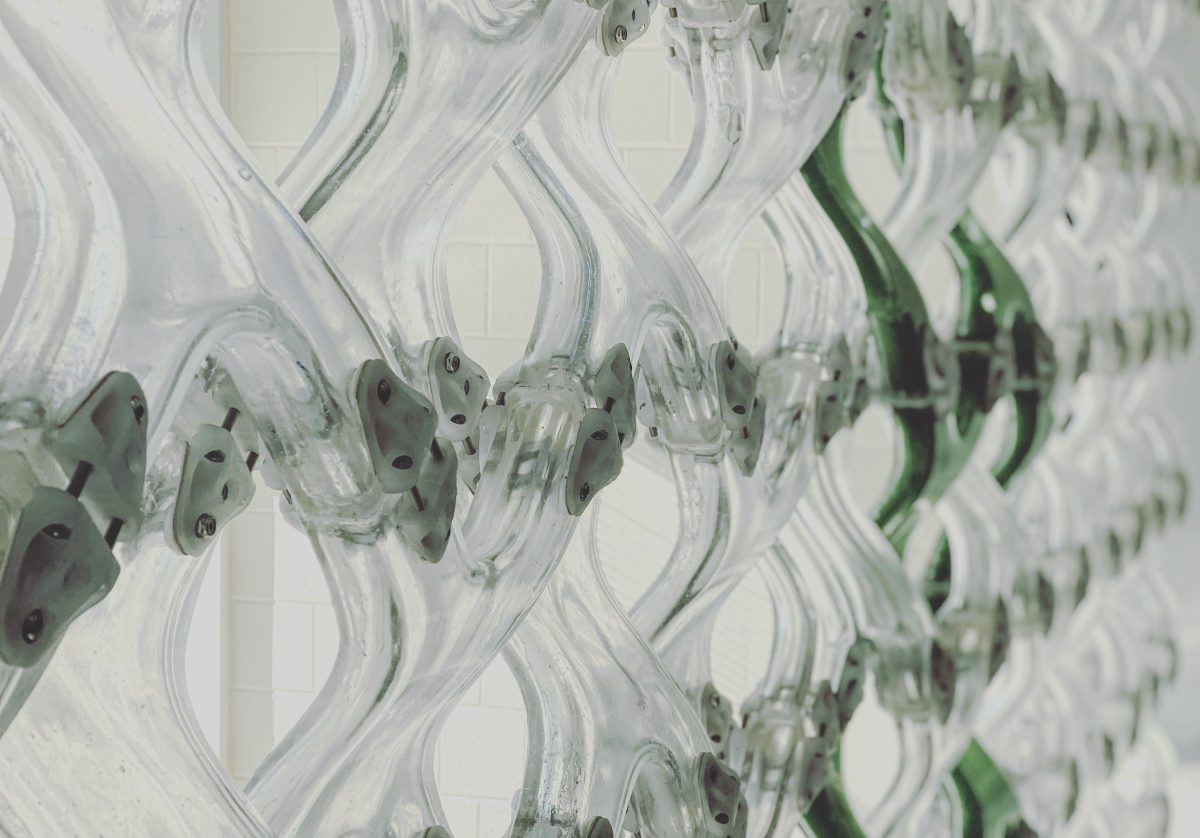Regenerative Design Technology

Bistable screens: smart materials for kinetic architecture
contact: Elena Vazquez
email: e.vazquez@uncc.edu
The snapping skins project explores elastic instability as a means to develop kinetic architectural skins that adjust to different environmental conditions. The research draws from recent developments in material science and engineering in smart materials, relying on shape-changing and bistable materials. The geometries and material configurations afforded by this new technology elicit new aesthetics and functional kinetic architectures, envisioning a future with more efficient built environments.
Bistability can be seen in everyday objects such as snap bracelets and measuring tapes. We can also find them in natural systems such as the Venus Flytrap. Bistable materials have yet to be explored for adaptive architecture; However, they present several qualities that make them appealing: they can present two distinct stable states and transition between them with a small input force. This project introduces bistability to architectural design, showing strategies for bistable kinetic environments.
Read more →

Solar Facades for Energy Savings and Clean Power Production
contact: Kyoung Hee Kim
email: kkim33@uncc.edu
The building enclosure is an important architectural element portraying architectural and energetic performances of buildings. While the solar cell industry has produced PV cell technologies that are cost effective, the number of BIPV systems in architectural applications remains limited primarily due to the systems’ upfront cost, low conversion efficiency, and unpleasing appearance. Therefore, there is an obvious need for windows that provide functional innovations and architectural quality than traditional BIPV windows. Our NSF funded solar facade system, as a primary building enclosure, consists of a network of adaptable solar modules that is optimized based on climate data and multi-functional requirements of power production, solar heat gain control, daylight penetration, and views out, depending on façade orientation and climate locations. Unlike conventional BIPVs that are not not transparent, our climate-responsive system offers view out and optical clarity providing higher occupant satisfaction.
Read more →

Kinetic Shading System:
Design and Fabrication Strategies using Kerf Bending Techniques (in Collaboration with Julio Diarte)
contact: Elena Vazquez
email: e.vazquez@uncc.edu
In the current context of increasing environmental concern, architects and researchers have proposed kinetic building envelopes to reduce energy consumption and increase resilience. The complexity of traditional kinetic systems has driven researchers to propose using smart materials as actuators; these materials, however, present limited kinetic capabilities and large actuation timescales. As a result, few studies have shown building-scale implementation and real-time actuation control. Compliant mechanisms rely on the flexibility of their members to achieve motion and can achieve large deflections; these systems, however, have yet to be explored in low-carbon materials such as wood-based ones. The project’s goal is to develop a kinetic compliant shade using kerf bending techniques–creating flexible forms from rigid panels. To develop the kinetic screen, we propose to use bistable compliant thin bamboo beams. The project aims to reduce buildings’ carbon footprint by offering kinetic shade systems that can be adjusted to different environmental conditions.
Read more →

Biochromic Facades towards Carbon Neutrality
contact: Kyoung Hee Kim
email: kkim33@uncc.edu
The NSF sponsored biochromic windows innovatively integrate a biological system – microalgae – within the window assembly, resulting in a cost effective and easy-to-install alternative for retrofitting low-performing commercial windows. As a mediator between indoor and outdoor environments, the biochromic window offers good dynamic shading efficacy and thermal properties, daylighting performance, structural integrity, water tightness, air tightness, and long-term durability. In addition, the windows benefit building occupants by providing good indoor air quality and outdoor views for improved health and wellbeing. The key constituents of our system are described fully in a patent application (Patent Number: 17/070,124; Inventor-Kyoung Hee Kim) filed by the University of North Carolina at Charlotte. The primary invention differentiates from the prior state-of-the-art by integrating a high-performance bioreactor within a window assembly, with multiple benefits such as higher building energy efficiency, CO2 sequestration, and high value bio-products from microalgae biomass.
Read more →